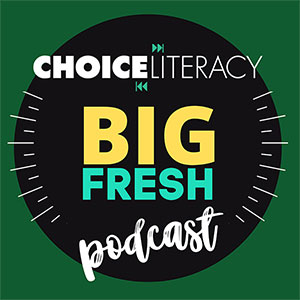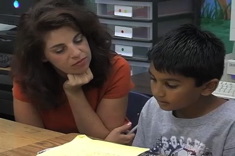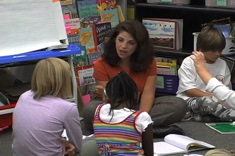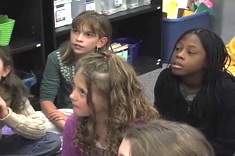There are some stories that are easy to remember — we pass them on to our children and grandchildren from memory. I’m not sure I ever read The Three Little Pigs or Goldilocks and the Three Bears
, but I certainly know the stories. It’s interesting that these are the kinds of stories we know by heart, when they’re certainly not the most beautifully crafted stories. But they’re simple enough to remember, and complex enough to keep our attention over the years.
I credit this to the fact that everything happens in threes. There are three protagonists (bears or pigs), there are three events before the climax (taste the porridge, break the chair, and fall asleep in the bed), and there are three of everything (three bowls, three chairs, three beds and three houses for the pigs). The pattern is easy to remember.
When I teach students about writing, grammar, and even reading, I refer to the rule of three. The rule of three is simple: things are manageable and elegantly presented in threes. A writer can write about three characters. A child can learn to use commas between three nouns in a series. And a reader can notice words and phrases that are repeated three times. Once students accept that three is a manageable number and that a lot of writing has a pattern of three elements, my teaching gets a lot easier. Here are some examples:
Look at this line from Slow Loris by A. Deacon:
It took Loris ten minutes to eat a Satsuma . . . twenty minutes to get from one end of his branch to the other . . . and an hour to scratch his bottom.
Notice the author groups things in threes:
- The time is ten minutes, twenty minutes and an hour
- Loris eats, move (gets) and scratches
- The ellipses separate three phrases
- The ellipses have three dots
Look at this paragraph from a student’s writing response about Ereth of the book Poppy by Avi:
He doesn’t have a lot of friends, only Poppy. He left his family. He wants to be by himself and eat salt. He shouts when someone comes near. He’s sad and lonely all of the time.
Notice the paragraph development. The main idea is he doesn’t have a lot of friends. There are three supporting details: He left his family, he wants to be alone, he shouts at others. Then there is the wrap-up sentence.
Here is another example of using the rule of three from There Goes Ted Williams: The Greatest Hitter Who Ever Lived by Matt Traverse:
He eats and eats and eats.
Notice the word ‘eats’ is emphasized through repetition and using the word ‘and’ instead of commas. This gives the reading the understanding that the character ate . . . A LOT and OFTEN.
In the book How We Are Smart, the format for each biographical profile is set up in three sections:
- a quote from the person;
- a poem about his/her greatest accomplishment or contribution; and
- a Wikipedia-style paragraph with a summary of his or her life.
Writing Expectations and the Rule of Three
In my classroom, I use the rule of three as a way to help students manage writing expectations. My students don’t have the time to spend months on one piece. I have to find ways to keep things manageable and yet stretch them as writers. Here are some ways I use the rule of three to teach writing.
Content development in narrative writing:
- Write about no more than three characters
- Have at least three events before the climax
- Use repetition (no more than three times) to emphasize something
- Give the reader three details about your character that will stick in the reader’s minds — don’t over do your details
- Use three detail sentences to support a main idea
Sentence structure:
- Use a comma between a series of three nouns. If there are more than three, you may also need a colon.
- Use three participle (verb) phrases to combine sentences
- Use a dash to set off a list of at least three items
- Start three sentences in a row with the same beginning
- Write three sentences. Start with a short one, then add a medium-sized one, and finish with a longer sentence. You can reverse this as well.
Writer’s craft:
- Repeat a word three times
- Repeat a functional fragment three times (Out! 2 Outs! 3 Outs! Game Over!)
- Use three words in an alliterative phrase (cloud-capped cornfield — from Leah’s Pony
)
WARNING: When you start teaching the rule of three, you’re going to see it pop up everywhere. It will appear in books, in student writing, and even in science and social studies texts — Columbus had three ships! Your students will not only improve their skills of reading like writers, but they will be empowered to try this strategy often. After all, you’re only asking for three of anything.









